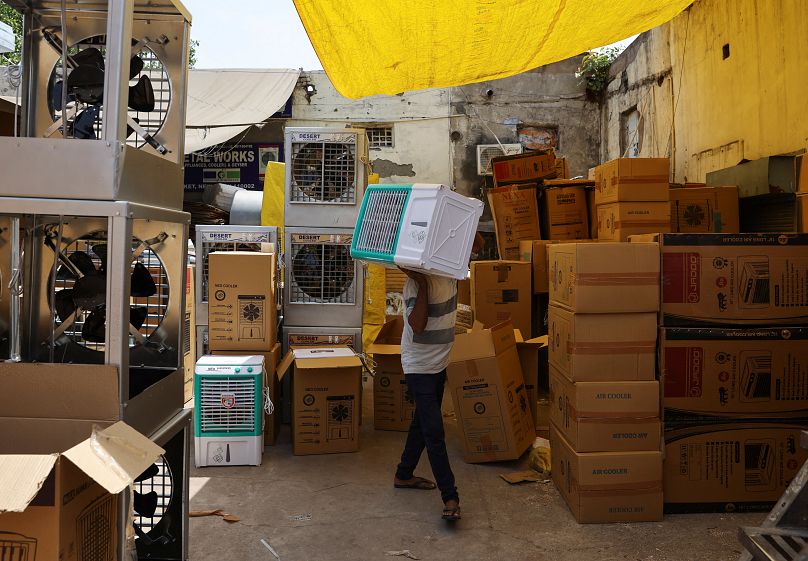
Screen grab from Westinghouse promotional video.
Small Modular Reactors (SMR) are the new nuclear craze, especially with the U.S. Congress, as America’s representatives see SMRs as a big answer to energy needs and reduction of greenhouse gases, advertised as a green deal for clean energy that skirts the heavy costs of paying the Middle East billions upon billions. However, the devil in the details is dangerously overlooked.
Notable nuclear accidents: NRX (1952) Kyshtym (1957) Windscale (1957) SL-1 (1961) Wood River Junction (1964) K-27 (1968) Three Mile Island (1979) Constituyentes (1983) Mohammedia (1984) K-431 (1985) Chernobyl (1986) Tokai (1997, 1999) Fukushima (2011) … but wait, hundreds, possibly thousands, of Small Modular Reactors (nuclear SMRs) are about to pop up around the world. What could possibly go wrong?
“Multiple and unexpected failures are built into society’s complex and tightly coupled nuclear reactor systems. Such accidents are unavoidable and cannot be designed around.” (Charles Perrow, Normal Accidents (Princeton University Press, 1999)
“On dozens of occasions because of human error or technical miscue or active threat, the world has come dangerously close to the brink of nuclear conflagration… it is a terrifying history of which most people remain ignorant.” (Julian Cribb, How to Fix a Broken Planet, Cambridge University Press, 2023.)
Should nuclear power really circumnavigate the planet with mini-power plants?
For Germany, which closed its last three nuclear plants in April 2023, the country’s Federal Office for the Safety of Nuclear Waste Management conducted a study: “SMRs have been the subject of repeated discussion in recent times. They promise cheap energy, safety, and little waste. BASE commissioned an expert report (in German) to evaluate these concepts and the risks associated with them. The report provides a scientific assessment of possible areas of application and the associated safety issues. It concludes that the construction of SMRs is only economically viable for a very large number of units and poses significant risks if widely deployed.”
Yet, “resistance to nuclear power is starting to ebb around the world with support from a surprising group: environmentalists… This change of heart spans the globe, and is being prompted by climate change, unreliable electrical grids and fears about national security in the wake of Russia’s invasion of Ukraine.” (Source: Why Even Environmentalists are Supporting Nuclear Power Today, NPR, August 30, 2022
U.S. senators recently introduced a nuclear energy bill called the Advance Act with bipartisan support, hopefully enhancing and advancing America’s world leadership role in nuclear energy by deploying SMRs by the bucketful, idealized as a “cleaner smarter safer solution” to today’s bulky nuclear power plants. Advance Act will cut red tape and make it easier and much faster for SMRs to gain a foothold in the marketplace.
Meanwhile, like the U.S., China has the same red hot nuclear fever. It has set aside $440B for its nuclear program, planning to build 150 new reactors by 2037, which equates to 10 per year, which, by almost all standards, seems unachievable. It tops cumulative world production over the past three decades.
Fearful of being left in China’s nuclear dust, on May 18th, a proposed House bill by Wittman (R-VA) speeds-up the building process for SMRs. And Joe Manchin (D-WV) has proposed the Nuclear Fuel Security Act to set up a nuclear fuel security program promoting domestic production of uranium.
The excitement over nuclear is palpable, as politicians’ hands tremble with excitement, introducing what’s billed as the perfect green clean way to solve energy needs. There are cheerleaders galore. The U.S. Congress for one is a very influential cheerleading group, but it’s more pervasive than that. Big players like Japan and China are going all-in for nuclear. Japan Adopts Plan to Maximize Nuclear Energy, in Major Shift, AP News, December 22, 2022.
Wait a moment… isn’t Japan currently being criticized in several quarters of the world for dumping Fukushima toxic radioactive water into the ocean? After all, the U.S. National Association of Marine Laboratories, with over 100 member laboratories, issued a position paper strongly opposing the toxic dumping because of a lack of adequate and accurate scientific data in support of Japan’s assertions of safety.
Regardless, last week the G7 nations gave its blessing for Japan to dump Fukushima’s toxic water into the Pacific Ocean. Hmm.
Interestingly, PM Shinzo Abe (1954-2022) shortly after Fukushima’s meltdown 10 years ago, assured the International Olympic Committee in consideration of holding the games in Tokyo, that “everything was under control.” Notwithstanding numerous assurances by Japanese authorities of no harm, no foul, over the years, several independent journalists in Japan have reported numerous deaths because of the Fukushima meltdown and its aftermath but never acknowledged by the government. Assurances are not always assurances!
Therefore, it’s only fair that the darker side of nuclear cheerleading — yea yea yea no nuclear no nuclear — deserves some notoriety. For starters, the results of a recent study by Stanford University’s Center for International Security and Cooperation published in the prestigious Proceedings of the National Academy of Sciences, May 31, 2022, entitled Nuclear Waste from Small Modular Reactors.
Stanford News also published the study: Sandford-led Research Finds Small Modular Reactors Will Exacerbate Challenges of Highly Radioactive Nuclear Waste. The study concludes that SMRs will generate more radioactive waste than conventional nuclear power plants. Stanford and the University of British Columbia jointly conducted the study, e.g., SMRs will be manufactured in factories and industry analysts claim SMRs will be cheaper and produce fewer radioactive byproducts than the big bulky conventional reactors; however, the study discovered the upsetting fact that, pound-for-pound when compared to the big bulky conventional nuclear plants, SMRs will increase nuclear waste… considerably!
“Our results show that most small modular reactor designs will actually increase the volume of nuclear waste in need of management and disposal, by factors of 2 to 30 for the reactors in our case study,” said study lead author Lindsay Krall, a former MacArthur Postdoctoral Fellow at Stanford University’s Center for International Security and Cooperation: “These findings stand in sharp contrast to the cost and waste reduction benefits that advocates have claimed for advanced nuclear technologies.” (Stanford study)
U.S. nuclear plants have already produced over 88,000 metric tons of “spent nuclear fuel” with nowhere to put it other than risky open pools of water at plant locations and some dry casks setups. Throughout America nuclear facilities contain open pools of spent fuel rods. According to Paul Blanch: “Continual storage in spent fuel pools is the most unsafe thing you could do.” (Paul Blanch, registered professional engineer, US Navy Reactor Operator & Instructor with 55 years of experience with nuclear engineering and regulatory agencies, widely recognized as one of America’s leading experts on nuclear power)
Accordingly, “the most highly radioactive waste, mainly spent fuel rods, will have to be isolated in deep-mined geologic repositories for hundreds of thousands of years. At present, the U.S. has no program to develop a geologic repository, after spending decades and billions of dollars on the Yucca Mountain site in Nevada. As a result, spent nuclear fuel is currently stored in pools or in dry casks at reactor sites, accumulating at a rate of about 2,000 metric tonnes per year.” (Stanford)
Nobody wants it in their backyard. Furthermore, what’s the message behind the fact that humanity has humiliatingly endangered itself by utilizing the most potent toxic material on Earth to boil water that results in highly radioactive spent fuel rods that can only be stored in deep-deep geologic repositories as far away from civilization as possible, locked away for centuries upon centuries? Rubbing two sticks together a million years ago was much smarter.
The Stanford study claims that few, if any, developers of SMR have analyzed the management and disposal of nuclear waste. “The study concludes that, overall, small modular designs are inferior to conventional reactors with respect to radioactive waste generation, management requirements, and disposal options.”
Meanwhile, SMRs are about to enter a world of nuclear power that has sharp critics. For example, crib notes of a detailed analysis of nuclear by Greenpeace, which has considerable nuclear expertise on staff, provides an offset to the ringing applause around the world for SMRs: 6 Reasons Why Nuclear Energy is not the Way to a Green and Peaceful World d/d March 18, 2022.
Greenpeace is not at all hesitant about exposing the “myths being perpetuated by the nuclear industry.”
For starters the scale of proposed nuclear energy installations does not come close to meeting the needs to go to net zero emissions in a timely fashion, according to projections by the World Nuclear Association, greenhouse gas emissions would only drop by 4% by 2050, assuming 37 new large nuclear reactors brought onto the grid per year from now to 2050. Yet only 57 new reactors are schedule for construction over the next 15 years. A number for SMRs is unknown currently.
Nuclear power plants are extremely dangerous as easy targets for terrorists, cyberattacks or acts of war. Moreover, they are unique hazards for accidents by nature like Fukushima and/or by human error like Chernobyl, and some accidents never go away.
“For the first time in history, a major war is being waged in a country with multiple nuclear reactors and thousands of tons of highly radioactive spent fuel. The war in southern Ukraine around Zaporizhzhia puts them all at heightened risk of a severe accident…. Nuclear power plants are some of the most complex and sensitive industrial installations, which require a very complex set of resources in ready state at all times to keep them operational,” Ibid.
Nuclear power plants are a water-hungry technology that must, must, must have a lot of water to cool the radioactive hot stuff. Nuclear power facilities are vulnerable to water stress, warming rivers, and rising temperatures. Facilities in the US and France have often been shut down during heatwaves or have scaled down activity, especially France’s shakiness in 2022. Global warming is nuclear power’s biggest enemy.
And, then there’s this: “Electricite de France SA’s fleet of 56 atomic power plants has long been the backbone of Europe’s energy system, but in 2022 it was more of a millstone. As reactors were shut down to fix cracked pipes, the company’s nuclear power generation slumped to the lowest since 1988, making the region more dependent on fossil fuels just as Russia squeezed natural gas exports.” (Source: French Nuclear Revival Hits Trouble as New Reactor Defects Found, Bloomberg March 10, 2023)
Not only does nuclear power put enormous stress on structural facilities, a huge incalculable risk, but water flowing past the nuclear fuel in the reactor cores gets heated to over 500°F. It can be heated to this temperature because it is pressurized to over 1,000 pounds per square inch (psi). The reactor vessel and its attached piping must be robust to remain intact and contain this high-pressure fluid. Abnormally high pressure can break even robust containers. (Union of Concerned Scientist) The strongest known pressure relief valves and piping must endure enormous pressure 24/7/365. This is an extreme high-risk category of nuclear operations.
Nuclear energy is also too expensive. According to a World Nuclear Industry Status Report, nuclear energy per MWh (megawatt-hour) costs 3-to-5 times more than wind or solar. Moreover, according to the same source, total costs of building and running a plant to lifetime for utility scale operations over the past decade have dropped by 88% for solar and by 69% for wind whilst nuclear has increased by 23%. Duh!
“Stabilizing the climate is an emergency. Yet, Nuclear Power is slow” (Greenpeace). The World Nuclear Industry Status Report says is takes 10 years on average in the world to construct a plant.
It’s impossible to get around the issue of radioactive waste, which is a huge problem that haunts the industry. Some isotopes remain highly radioactive for several thousand years. What to do with it? The costs are outrageous. The US Energy Dept. projected cost for long-term nuclear waste cleanup jumped more than $100B in just one year. According to Stanford’s study, SMRs will exaggerate this problem by factors of 2-to-30. (Stanford study)
But, of course there’s always the easy way out of handling toxic waste: According to a Greenpeace International 2021 Tweet: “French companies are exporting nuclear waste to Siberia dumping barrels in unsafe conditions completely exposed to the elements.” Hmm.
Moreover, it’s oxymoronic to claim nuclear power is “sustainable green energy” and should be eligible for green funding. Oh, please! Only radioactive waste is sustainable. Interestingly, in 2021 Austria, Denmark, Germany, Luxembourg, and Spain objected to an inclusion of nuclear power in the EU’s green finance category.
And nuclear energy has always overpromised and underdelivered: “Hypothetical new nuclear power technologies have been promised to be the next big thing for the last forty years, but in spite of massive public subsidies, that prospect has never panned out. That is also true of Small Modular Reactors, SMRs,” Ibid.
As explained in a press release d/d November 18, 2020, regarding SMR development: “The proposed reactors are still on the drawing board and will take a decade or more to develop. If built, their power will cost ten (10) times more than wind or solar energy. The most advanced SMR project to date in the US has already doubled its estimated costs from $3B to over $6B,” Ibid.
However, Russia has already launched a floating 70MW reactor in the Arctic Ocean (of all places!). China is also working on a floating design SMR. And three provinces in Canada are looking into SMRs. Rolls-Royce in the UK is working on a 440MW SMR. SMRs are generally designed to produce 50 to 300MW of electricity compared to the typical 1,000MW of traditional large-scale reactors.
In fairness to advocates, according to Nuscale, one of the engineering firms behind SMR development: “Even under worst case scenarios, where we lose all off-site power, the reactor will safely automatically shut down and remain cool for an unlimited time.’ adding, ‘this is the first time that’s been done’ for commercial nuclear power.” (Source: The Countries Building Miniature Nuclear Reactors, Future Planet, Yale e360, March 9, 2020).
Still, every nuclear conversation turns to radioactive waste and safety regardless of claims made by industry and with good reason. In fact, the repercussions of nuclear accident deaths and disfigurements are always buried from public view, until years later when the brutal truth finally comes out.
A BBC Future Planet article d/d July 25, 2019, The True Toll of the Chernobyl Disaster: “According to the official, internationally recognized death toll, just 31 people died as an immediate result of Chernobyl while the UN estimates that only 50 deaths can be directly attributed to the disaster. In 2005, it predicted a further 4,000 might eventually die as a result of the radiation exposure… Brown’s research, however, suggests Chernobyl has cast a far longer shadow.”
According to an article in USA Today d/d February 24, 2022, What Happened at Chernobyl? What to Know About Nuclear Disaster: “At least 28 people were killed by the disaster, but thousands more have died from cancer as a result of radiation that spread after the explosion and fire. The effects of radiation on the environment and humans is still being studied.”
As of 2023, the death count is much more than the 4,000 calculation of 2005.
The legacy of nuclear accidents, as deaths and deformities mount over time, kills the dream of a carbonless, clean power future. But legacies take years to form. Given enough time, radioactive waste will greet 30th century archeologists.
For a prize-winning compelling read about the most toxic place in America and a terrifying look at the radioactive nuclear materials produced at Hanford for four decades: Atomic Days, The Untold Story of the Most Toxic Place in America (Haymarket Books, 2022)
Regardless of the strongest assurances, nuclear accidents happen. They just happen!







